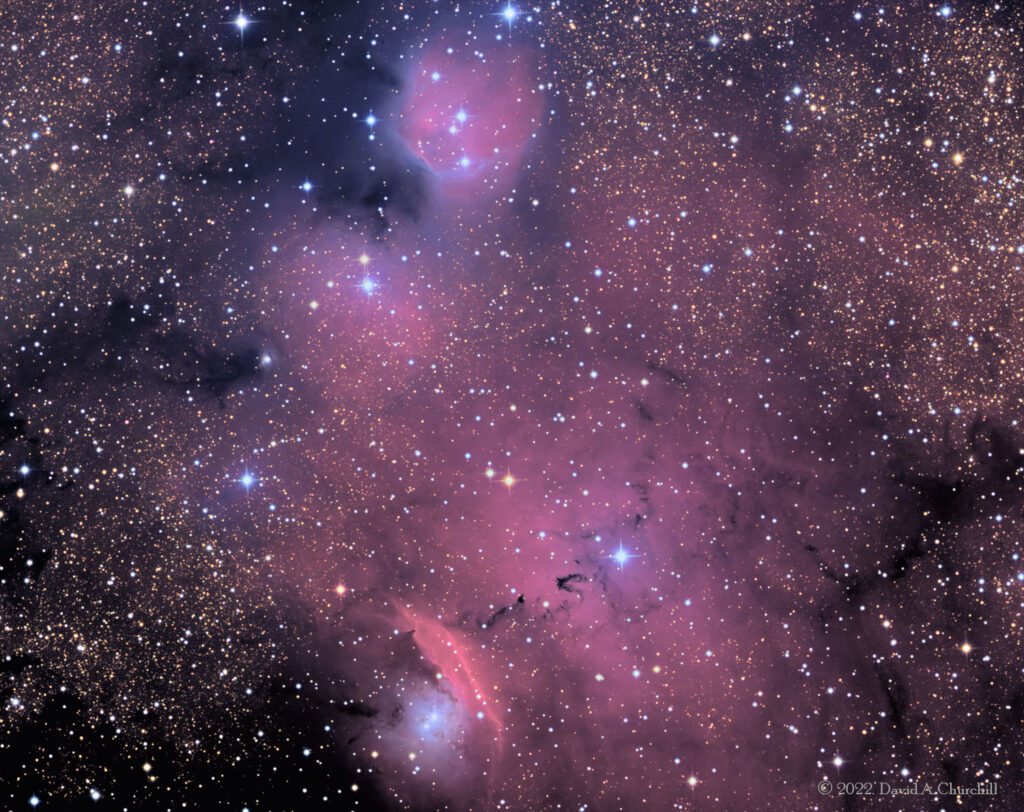Sharpless 29 (sh2-29)
Complex Emission, Reflection & Dark Nebula Region. Sagittarius
- Description
- Technical
- Links
Sharpless 29 (Sh2-29) is listed in the Sharpless catalogue of H II regions: interstellar clouds of ionised gas, and star formation. It is located about 5500 light-years away in the constellation of Sagittarius, about 1.25 degrees north-east of the larger Lagoon Nebula.
When interstellar dust and gas are bombarded with ultraviolet light from hot young stars, the energy causes them to shine brilliantly. The diffuse red glow dominating this image comes from the emission of hydrogen gas, while the shimmering blue light is caused by reflection and scattering off small dust particles. As well as emission and reflection, absorption takes place in this region. Patches of dust block out the light as it travels towards us, preventing us from seeing the stars behind it, and smaller tendrils of dust create the dark filamentary structures within the clouds.
Sh2-29 is a complex region, with IC 4685 at the center. The highly active star forming region of NGC 6559 is at the bottom of the image, with IC 1274 at the top. IC 2175 lies next to this separated by the dark nebula, Barnard 91 (B91).
When interstellar dust and gas are bombarded with ultraviolet light from hot young stars, the energy causes them to shine brilliantly. The diffuse red glow dominating this image comes from the emission of hydrogen gas, while the shimmering blue light is caused by reflection and scattering off small dust particles. As well as emission and reflection, absorption takes place in this region. Patches of dust block out the light as it travels towards us, preventing us from seeing the stars behind it, and smaller tendrils of dust create the dark filamentary structures within the clouds.
Sh2-29 is a complex region, with IC 4685 at the center. The highly active star forming region of NGC 6559 is at the bottom of the image, with IC 1274 at the top. IC 2175 lies next to this separated by the dark nebula, Barnard 91 (B91).
Telescope: Planewave CDK17 (FR) f4.5
Mount: Astro Physics 1600GTO
Camera: QHY16200A/ Integral FW
Guider: Agena Starguide II / ZWO ASI178MM
Filters: Astronomik 36mm LRGB
L: 53×10 mins = 530 mins, R: 24×10 mins = 240 mins, G: 24×10 mins = 240 mins, B: 24×10 mins = 240 mins
Total Imaging Time: 20h 50m
Data Imaged remotely over 6 nights during July 2022.
Imaged from Observatorio El Sauce, Chile, in partnership with Fred Espenak.
Data acquisition & Processing by David Churchill.
None

